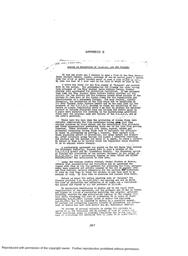Kalpana (Restored) (1948)
Director: Uday Shankar; Writer: Uday Shankar; Cinematographer: K. Ramnoth; Cast: Lakshmi Kanta, Usha Kiran, Amala Shankar, Uday Shankar
Duration: 02:33:25; Aspect Ratio: 1.370:1; Hue: 120.000; Saturation: 0.000; Lightness: 0.004; Volume: 0.096; Cuts per Minute: 9.633; Words per Minute: 35.652
Summary: Restored Version (2012)

Special musical effects: includes Ali Akbar Khan and 'Ravindra Shankar'

Introductory statement: 'I request you all to be very alert while you watch this unusual picture - a Fantasy. Some of the events depicted here will reel off at a great speed, and if you miss any piece you will really be missing a vital aspect of our country's life in its Religion, Politics, Education, Society, Art and Culture, Agriculture and Industry.
I do not deliberately aim my criticism at any paricular group of people or institutions, but if it appears so, it just happens to be so, that is all. It is my duty as an Artist to be fully alive to all conditions of life and thought relating to our country and present it truthfully with all the faults and merits through the medium of my Art. And I hope that you will be with me in our final purpose to rectify our own shortcomings and become worthy of our cultural heritage and make our motherland once again the greatest bin the world.
- UDAY SHANKAR
This was a controversial statement, and much was made of who he might be referring to, both offscreen and on-screen.
artists statement

At a 'Thunderstruck' Film Studio, a scenarist is trying to persuade a movie producer to make a film about the 'needs of the country'. Almost more than any of the 'War-effort' realist films of the year (the others being Dharti ke Lal, Neecha Nagar and Dr. Kotnis Ki Amar Kahani, all made the same year), Kalpana consciously references the circumstances of its actual making: the widespread perception of the heartless inability of India's movie producers to make films about 'reality' (as a part of the War effort).
In his 'Report' on Kalpana and its finance, Uday Shankar writes: 'Those were the days when the production of cinema films were strictly controlled; the film racketeers having gong good time selling licences in black market and the established film producers and their organisations, preventing those new to the line from getting licences. Those Producers all over India, howled, barked and protested vehemently trying their best to influence the officials in Delhi in preventing me getting a licence'
(see note below):


The pre-history, of the child Udayan and the child Uma: the balletic dance performance idiom already established. What is remarkable about the idiom is the way the film can move seamlessly between three states: the 'real' story, the performance on stage, and the dream: something it will do throughout.
"A typical exercise would present the opportunity for the students to call upon all of their senses and then respond to the movement in relation to their own experience and at their own pace. For example, a movement would be
presented to the students. Rather than merely imitating it until the body had kinesthetically memorized the movement, the students were asked to analyze the movement by locating it in their sight (to see the movement in space). Then, they were asked to place it into a basic, identified movement pattern (the arc theory). The student then executed the
movement within his own spatial arc, sensing the stress and release within the body, identifying those areas affected and in what way, so that the distinction of stress and
release in the muscles was noticeable in order to identify the
movement kinesthetically as well as visually through direct observation - Ruth Abrahams, 'The Life and Art of Uday Shankar (NYU PhD Thesis, 1985: pg 178-179)

The phantasy of the 'bada shaher' - the family of the child Uma moves to the city, triggering off a brief fantasy for Udayan, as to what the big city holds. The first of the film's several very famous multiple-image montages: his face on which are superimposed the images of performance in the city.

Uday Shankar/Udayan's entire imagination of the enlightened new-generation art institution was defined against the perceived tyranny of the prevailing educational system, which kills the creative 'dreams' of children. This sequence is also the key moral framing of the problem, as the 'film-within-the-film' also seeks to show, using the narrator/scenarist's voiceover.

Udayan grows up. Interestingly, his first art seems to be watercolour, very much in the Bengal School idiom. He is now sent to Benares for further education.

Benares, and the first school: Uday Shankar himself considered starting his first dance centre in Benares, and also outlined in 1937 his initial imagination for it:


The second fantasy: also one of the film's most famous sequences: the dance of the hand. A shot, presumably set in hell, has Udayan 'fall', in atonement for the loss of a year. The entire dance, involving several dissolves and superimpositions, also introduces Amala Shankar into the film: the grown-up Uma.
Even before turning filmmaker, Uday Shankar was fascinated with multimedia representations on stage. "Shankar's interest in multimedia presentations began at Almora, and most of his key works are in the film. Multimedia included his fascination with combining "stage and screen effects with old-fashioned magic and
illusion" (Ruth Abrahams, 'The Life and Art of Uday Shankar, NYU PhD Thesis, 1985: pg 202)

First proper introduction of Uma (Amala Shankar): Udayan recognizes her from his dream. The context for the staging of the first dance ballet in Benares

party playlist

unite
Indiancine.ma requires JavaScript.